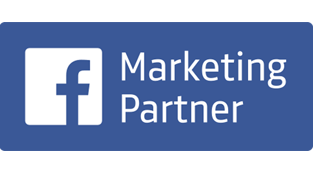Email marketing is a powerful tool for personal injury law firms aiming to attract and retain clients. When done correctly, it can significantly enhance your lead generation efforts and increase client conversions. This comprehensive guide explores effective strategies for creating email marketing campaigns that convert, tailored specifically for personal injury law firms.
Understanding the Importance of Email Marketing for Personal Injury Law Firms
Why Email Marketing Matters
Email marketing remains one of the most effective digital marketing channels for personal injury law firms. It allows you to directly reach potential clients, nurture leads, and build lasting relationships. According to recent studies, email marketing has an average ROI of $42 for every $1 spent, making it a cost-effective strategy for client acquisition and retention.
Benefits of Email Marketing
- Direct Communication: Emails provide a direct line of communication with your audience, allowing for personalized and targeted messaging.
- Cost-Effective: Compared to other marketing channels, email marketing is relatively inexpensive.
- Measurable Results: Email marketing platforms offer detailed analytics, enabling you to track open rates, click-through rates, and conversions.
- Builds Relationships: Regularly sending valuable content helps build trust and establish your firm as a thought leader in personal injury law.
Building Your Email List
Strategies for Growing Your Email List
A high-quality email list is the foundation of any successful email marketing campaign. Here are some strategies to grow your email list:
Utilize Your Website
- Lead Magnets: Offer valuable resources such as free eBooks, guides, or checklists in exchange for email addresses.
- Pop-Up Forms: Use pop-up forms on your website to capture email addresses from visitors.
- Newsletter Sign-Up: Encourage visitors to subscribe to your newsletter for updates and legal tips.
Leverage Social Media
- Promote Email Sign-Ups: Use your social media platforms to promote email sign-ups by highlighting the benefits of subscribing.
- Contests and Giveaways: Run contests or giveaways that require an email address to participate.
Offline Opportunities
- Events and Seminars: Collect email addresses at events, seminars, or webinars.
- Client Interactions: Ask for email addresses during client consultations or interactions.
Crafting Compelling Email Content
Understanding Your Audience
To create emails that resonate with your audience, you need to understand their needs, interests, and pain points. Segment your email list based on factors such as case type, stage in the client journey, and demographics.

Personalization and Segmentation
- Personalized Greetings: Use the recipient’s name in the email to make it more personal.
- Segmented Lists: Send targeted emails to different segments of your list to ensure relevance and increase engagement.
Writing Engaging Subject Lines
The subject line is the first thing recipients see, and it determines whether they open your email. Here are some tips for crafting effective subject lines:
- Be Clear and Concise: Clearly convey the email’s content in a few words.
- Create a Sense of Urgency: Use phrases like “Don’t Miss Out” or “Last Chance” to create urgency.
- Use Numbers and Lists: Numbers and lists (e.g., “5 Tips for…”) often catch readers’ attention.
Providing Valuable Content
Your email content should offer value to the recipients. Here are some content ideas:
- Legal Tips and Advice: Share useful tips related to personal injury law.
- Case Studies: Highlight successful case studies to build credibility.
- Client Testimonials: Include testimonials from satisfied clients.
- Updates and News: Keep your audience informed about changes in the law or your firm’s achievements.
Effective Calls-to-Action
Every email should have a clear call-to-action (CTA) that guides the recipient on what to do next. Ensure your CTA stands out and is action-oriented, such as “Schedule a Free Consultation” or “Download Your Free Guide.”
Designing Your Emails
Mobile-Friendly Design
With a significant number of people checking emails on their mobile devices, it’s crucial to ensure your emails are mobile-friendly.
Responsive Templates
Use responsive email templates that adjust to different screen sizes, ensuring your emails look good on both desktop and mobile devices.
Readable Fonts and Layout
- Font Size: Use a font size that is easy to read on smaller screens.
- Short Paragraphs: Break up text into short paragraphs for better readability.
- Clear Headings: Use headings and subheadings to organize content and make it scannable.
Visual Elements
Incorporate visual elements such as images, infographics, and videos to make your emails more engaging. Ensure that these elements do not slow down the email load time.
Analyzing and Optimizing Your Email Campaigns
Tracking Key Metrics
To understand the effectiveness of your email campaigns, track key metrics such as:
- Open Rates: The percentage of recipients who open your email.
- Click-Through Rates (CTR): The percentage of recipients who click on links within your email.
- Conversion Rates: The percentage of recipients who take the desired action, such as scheduling a consultation.
- Bounce Rates: The percentage of emails that could not be delivered.
A/B Testing
A/B testing involves sending two versions of an email to a small segment of your list to see which one performs better. Test different elements such as subject lines, CTAs, and content to determine what resonates best with your audience.
Continuous Improvement
Use the insights gained from tracking and testing to continuously improve your email marketing campaigns. Regularly update your content, design, and strategies based on what works best for your audience.
Compliance and Best Practices
Adhering to Email Marketing Laws
Ensure your email marketing practices comply with laws such as the CAN-SPAM Act in the US and GDPR in the EU. Key compliance requirements include:
- Opt-In: Ensure recipients have explicitly opted in to receive emails from you.
- Unsubscribe Option: Provide a clear and easy way for recipients to unsubscribe.
- Accurate Sender Information: Ensure your emails include accurate sender information and contact details.
Building Trust and Credibility
Build trust with your audience by being transparent and consistent. Provide value in every email and avoid spam or misleading tactics.
Conclusion
Email marketing is a powerful tool for personal injury law firms to connect with potential clients, nurture leads, and build lasting relationships. By understanding your audience, crafting compelling content, designing mobile-friendly emails, and continuously optimizing your campaigns, you can create email marketing campaigns that convert effectively.
Apply for your FREE Discovery Call today! Enhance your firm’s email marketing strategy with our expert guidance, and start converting more leads into loyal clients today.
Focused Keywords:
- Email Marketing for Personal Injury Law Firms
- Legal Email Marketing Campaigns
- Personal Injury Lawyer Marketing
- Email Marketing Strategies for Lawyers
- Email Campaigns for Law Firms
- Converting Leads with Email Marketing



